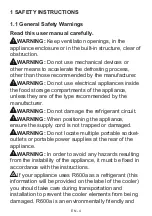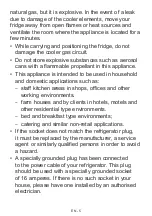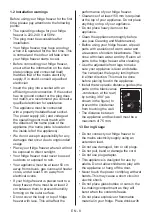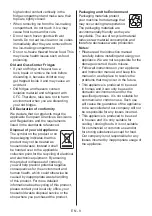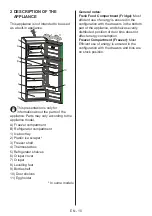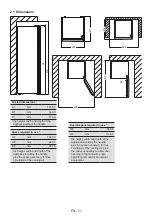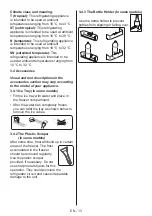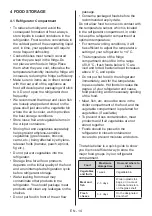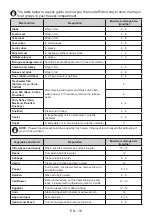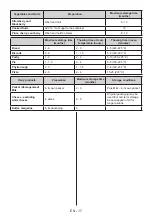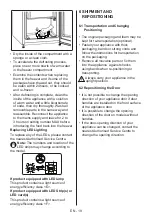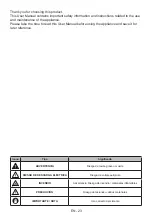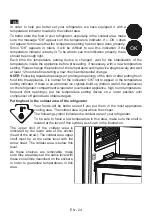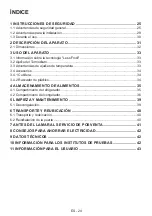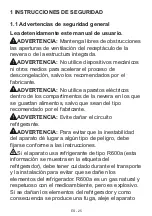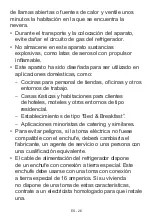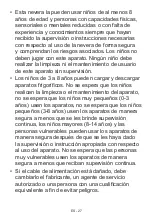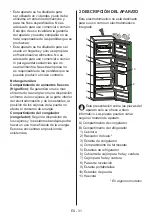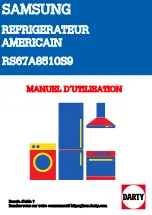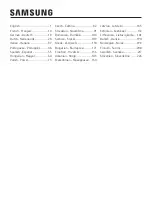
EN - 18
5 CLEANING AND
MAINTENANCE
Disconnect the unit from the power
supply before cleaning.
Do not wash your appliance by
pouring water on it.
Do not use abrasive products,
detergents or soaps for cleaning the
appliance. After washing, rinse with clean
water and dry carefully. When you have
finished cleaning, reconnect the plug to the
mains supply with dry hands.
•
Make sure that no water enters the lamp
housing and other electrical components.
•
The appliance should be cleaned
regularly using a solution of bicarbonate
of soda and lukewarm water.
•
Clean the accessories separately by
hand with soap and water. Do not wash
accessories in a dish washer.
•
Clean the condenser with a brush at least
twice a year. This will help you to save on
energy costs and increase productivity.
The power supply must be
disconnected during cleaning.
5.1
Defrosting
Defrosting the Refrigerator
Compartment
•
Defrosting occurs automatically in
the refrigerator compartment during
operation. The water is collected by
the evaporation tray and evaporates
automatically.
•
The evaporation tray and the water drain
hole should be cleaned periodically with
the defrost drain plug to prevent the
water from collecting at the bottom of the
refrigerator instead of flowing out.
•
You can also clean the drain hole by
pouring half a glass of water down it.
Freezer defrosting process
•
Small amounts of frost will accumulate
inside the freezer, depending on the
length of time the door may be left open
or the amount of moisture introduced.
It is essential to ensure that no frost or
ice is allowed to form in places where
it will affect the close fitting of the door
seal. This might allow air to penetrate the
cabinet, encouraging continuous running
of the compressor. Thin frost formation
is quite soft and can be removed with a
brush or plastic scraper. Do not use metal
or sharp scrapers, mechanical devices or
other means to accelerate the defrosting
process. Remove all dislodged frost from
the cabinet floor. It is not necessary to
switch off the appliance for the removal
of thin frost.
•
For the removal of heavy ice deposits,
disconnect the appliance from the
mains supply, empty the contents into
cardboard boxes and wrap in thick
blankets or layers of paper to keep cool.
Defrosting will be most effective if carried
out when the freezer is nearly empty
and should be carried out as quickly
as possible to prevent an unnecessary
increase in the temperature of the
contents.
•
Do not use metal or sharp scrapers,
mechanical devices or other means to
accelerate the defrosting process. An
increase in temperature of frozen food
during defrosting will shorten the storage
life. Keep contents well wrapped and cool
while defrosting is taking place.

